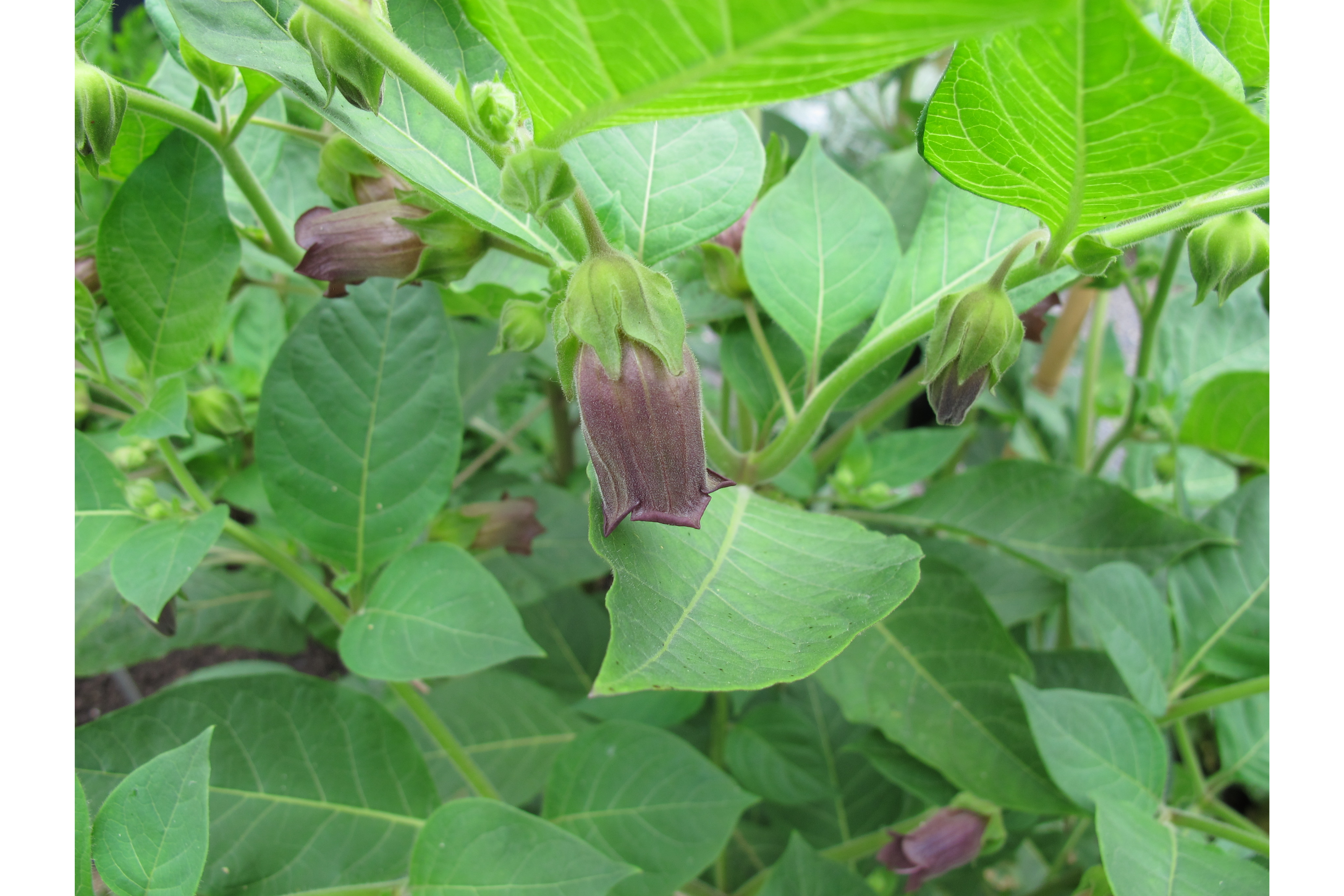Deadly Nightshade
(Atropa belladonna)

Description
Atropa belladonna, commonly known as belladonna or deadly nightshade, is a toxic perennial herbaceous plant in the nightshade family Solanaceae, which also includes tomatoes, potatoes, and eggplant (aubergine). It is native to Europe, North Africa, and Western Asia. Its distribution extends from Great Britain in the west to western Ukraine and the Iranian province of Gilan in the east. It is also naturalised or introduced in some parts of Canada and the United States. Atropa belladonna is native to temperate southern, Central and Eastern Europe; North Africa, Turkey, Iran and the Caucasus, but has been cultivated and introduced outside its native range. In southern Sweden it was recorded in Flora of Skåne in 1870 as grown in apothecary gardens near Malmö. In Britain it is native only on calcareous soils, on disturbed ground, field margins, hedgerows and open woodland. More widespread as an alien, it is often a relic of cultivation as a medicinal herb. Seed is spread mainly by birds. It is naturalized in parts of North America, where it is often found in shady, moist locations with limestone-rich soils. It is considered a weed species in parts of the world, where it colonizes areas with disturbed soils. Atropa belladonna is in the nightshade family (Solanaceae), which it shares with potatoes, tomatoes, eggplants, jimsonweed, tobacco, wolfberry, and chili peppers. The common names for this species include belladonna, deadly nightshade, divale, dwale, banewort, devil's berries, death cherries, beautiful death, devil's herb, great morel, and dwayberry. Atropa belladonna is a branching herbaceous perennial rhizomatous hemicryptophyte, often growing as a subshrub from a fleshy rootstock. Plants grow to 2 m (7 ft) tall with ovate leaves 18 cm (7 in) long. The bell-shaped flowers are dull purple with green tinges and faintly scented. The fruits are berries, which are green, ripening to a shiny black, and approximately 1.5 cm (0.6 in) in diameter. The berries are sweet and are consumed by animals that disperse the seeds in their droppings, even though they contain toxic alkaloids (see Toxicity). There is a pale-yellow flowering form called Atropa belladonna var. lutea with pale yellow fruit. A. belladonna is sometimes confused with the much less poisonous black nightshade, Solanum nigrum, belonging to a different genus within Solanaceae.
Taxonomic tree:







